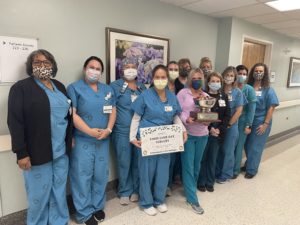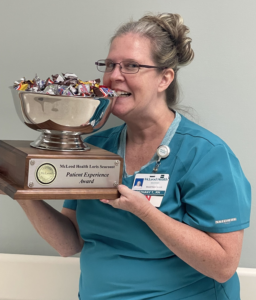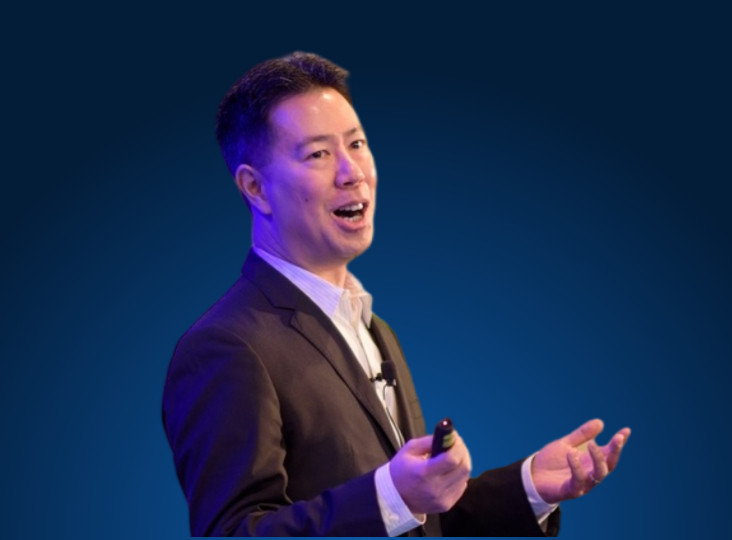How recognition can be the path to resilience
Now more than ever, healthcare is facing more stressed and worried employees, who are less engaged and leaving the workforce in record numbers. Depressing? Not with the understanding that organizations have the power and responsibility to improve their employees’ well-being, and can do so when they cultivate the whole person at work—not just the employee.
Consider these facts: 
- According to a 2021 Deloitte poll, employee productivity, performance, and engagement are 14% higher in organizations with recognition programs than in those without them.
- A 2019 SHRM study found that 79% of millennials surveyed said that an increase in rewards would make them more loyal to their employer.
- A February 2022 study by Morning Consult and Axios showed that 31% of employees found hiring more workers to be effective at keeping them happy at their jobs, versus 38% who said more frequent praise from bosses kept them happy.
2022 NRC Health Symposium speaker Nick DeStefano, M.S., Service Experience Process Manager with McLeod Health, says that while keeping employees happy can be an uphill battle right now, resilience is not just something you either have or don’t have.
“Resilience is also a skill,” he says. “It’s something we learn. It’s something we can improve. We must work on that individually, each of us with our employees, because we have that power and responsibility—every one of us.
If we want to create resilient people, we need to have people who are self-aware. We need to have people who feel cared about. We need to have people who understand their ‘why,’ and we need to help them remember that. That’s our power and responsibility. We must take that seriously.”
What Successful Recognition Programs Have
With seven hospitals serving eastern South Carolina and southern North Carolina with 940 licensed beds, 860 physicians, 2,700 registered nurses, and approximately 9,500 employees, McLeod Health’s recognition programs must be successful. DeStefano defines successful recognition programs as having both formal and informal components that are sufficiently funded, aligned with mission and values, appropriate, simple, timely, and regularly evaluated.
“You need to give an employee something that they like,” he says. “It also must be appropriate based on where the person works. I can’t give something for the cafeteria to someone on the night shift, if the cafeteria’s not open. It needs to be administratively simple—and I will tell you, one of the most difficult pieces of recognition programs is, how do we get all the people in the room, and the person from the night shift, and make it all happen? That’s probably our largest challenge as we’ve grown our recognition.”
 Formal Recognition can include Merit Awards, Stories of Ordinary Greatness, Care Coupons, High–Fives, Monthly High–Five Awards, and Quarterly Patient Experience Improvement Awards.
Formal Recognition can include Merit Awards, Stories of Ordinary Greatness, Care Coupons, High–Fives, Monthly High–Five Awards, and Quarterly Patient Experience Improvement Awards.
Quarterly Patient Experience Improvement Awards can be based on specific PX metrics measured via NRC surveys. This award utilizes NRC Health’s Trend Report to track chosen metrics quarterly. The award is selected by the administration and presented publicly to the department/team, and includes a trophy full of candy (funded by the administration) to display for the quarter and a small banner signed by leadership. The recognized department is announced at a hospital directors’ meeting, and the department director presents their team’s best practices to peers. Sometimes the award recognizes improvement; sometimes, it’s about excellence.
Monthly High–Five Awards include a gift basket and a certificate given to one team member from each campus based on specific service–excellence behavior. (Professionalism, responsiveness/customer waiting, doing the right thing, going above and beyond, and personal ownership are examples.) It is expected that directors will utilize positive NRC Health comments to determine who receives a High–Five.
“What are we doing, again, is reinforcing the behavior we want to see and building that culture that this is what’s expected,” DeStefano says. “So we are now recognizing people for the great story instead of just the random, ‘Oh, you’re a great team player,’ or, ‘They picked up an extra shift for me.’ We must have that informal recognition piece of it, but should the person who has a great story or the person who is a great team player get the large monthly recognition? This is why it’s a good idea to keep reevaluating it.”
Informal recognition can include tear-away sheets, a Take What You Need station, weekly Wednesday WOWS, Chalk to Inspire programs, daily reminder notes on cars, and celebrations of Monthly Moments of Excellence.
How to Use NRC Health’s Feedback to Fuel Recognition
NRC Health’s patient experience tools cover real-time surveys in ED, OAS-CAHPS, and medical practice. The feedback allows you to track what areas are highlighted in Feedback Management, and you can use a template in Publisher or Word to email out the feedback weekly to all directors and monthly to all employees. You can also subscribe to see all comments weekly.
DeStefano also encourages people who may want to bring recognition programs to their healthcare organizations to use a free version of Canva, which he says is easy to use. He emphasizes that while simplicity is crucial to a successful program, it’s also important to balance recognition from a DEI perspective and include travelers in recognition huddles.
Save the date for NRC Health’s 29th Annual Symposium in Boston! Get Symposium updates here.


